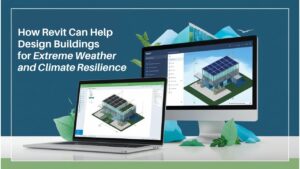
Welcome to the world of CAD design! As technology continues to advance at a rapid pace, the demand for skilled CAD designers is skyrocketing. With the ability to create complex and precise designs, CAD design software has become an essential tool for various industries, from architecture to manufacturing.
But what does the future hold for this powerful software? In this blog post, we will explore the top 5 emerging trends in CAD design software that are set to shape the industry in the year 2024. So whether you’re a seasoned CAD designer or a potential student looking to enter this high demand field, get ready to sculpt your future with these exciting innovations in computer-aided design software.
Innovative CAD Trends Taking Over by 2024
The landscape of CAD design is undergoing a transformative shift, heralding an era where innovation meets practical application. As we move towards the end of 2024, five groundbreaking trends are poised to redefine the industry, offering an exhilarating opportunity for both seasoned professionals and aspiring designers.
For potential students, these trends are not just academic topics; they represent a gateway to high-demand careers, equipped with the skills to tackle the challenges of tomorrow and secure lucrative, fulfilling roles in a dynamic field.
AI and Machine Learning Revolutionize Design Efficiency
As we dive into the fascinating world of CAD design, a standout trend is the revolutionary impact of AI and Machine Learning (ML) on design efficiency. Imagine a workspace where your CAD software learns from each project, becoming smarter and more intuitive with every use. This isn’t a glimpse into the distant future; it’s happening as we speak, setting the stage for a monumental shift in how designs come to life.
AI and ML are transforming the CAD landscape by streamlining the design process, from initial concept to final product. These smart technologies assist in automating mundane tasks, allowing designers to focus on the creative aspects of their projects.
Think of it as having a virtual assistant that not only speeds up your workflow but also enhances the precision of your designs. This means fewer errors, more innovation, and designs that truly stand out.
For prospective students and budding designers, the integration of AI and ML into CAD software presents a thrilling opportunity. It’s not just about learning to use the software; it’s about mastering an intelligent tool that adapts and evolves. This skill set is highly sought after across industries, positioning you as a valuable asset in the job market.
Moreover, AI and ML open up new avenues for experimentation and creativity in design. By harnessing the power of these technologies, you can push the boundaries of what’s possible, creating more complex and sophisticated designs than ever before.
Cloud-Based Collaboration Takes Center Stage
In the dynamic world of CAD design, the way we collaborate is undergoing a significant transformation. The advent of cloud-based collaboration platforms is not just a trend; it’s a revolutionary shift that’s set to take center stage.
This evolution in technology is making it easier than ever for designers, engineers, and stakeholders to work together seamlessly, no matter where they are in the world.
Cloud-based collaboration represents a leap forward in how we approach projects. It allows for real-time sharing and editing of CAD files, fostering a truly collaborative environment. Imagine working on a design and having a colleague from across the globe make adjustments or provide feedback instantaneously. This level of interaction accelerates the design process, enhancing productivity and efficiency.
It’s critical for aspiring students and CAD professionals to comprehend and embrace this trend. It’s not just about mastering CAD software anymore; it’s about learning how to effectively collaborate within these digital ecosystems. This skill is becoming increasingly valued in the workplace as projects become more global and teams more distributed.
Sustainable Design Practices Gain Momentum
As we move forward, sustainable design practices are not just a trend but a necessity that’s quickly gaining momentum in the CAD design landscape. The push for eco-friendly and sustainable solutions is reshaping how designers think and create.
With CAD software at the forefront, designers now have powerful tools to develop energy-efficient models, reduce waste, and utilize materials more responsibly.
This shift towards sustainability is not merely about meeting regulations; it’s about innovating for a healthier planet. For potential students entering the field, this presents a unique opportunity to be at the cutting edge of design with a purpose. Learning to integrate sustainable practices into your CAD projects means you’re not just building a portfolio; you’re contributing to a global effort to design with the environment in mind.
Embracing sustainable design practices equips you with a modern skill set that’s increasingly in demand. Companies across industries are seeking designers who can create not only aesthetically pleasing but also environmentally conscious and resource-efficient designs.
By focusing on sustainability, you position yourself as a forward-thinking designer ready to tackle the challenges of the future while making a positive impact on the world.
Virtual Reality (VR) and Augmented Reality (AR) Enhance Visualization
In the realm of CAD design, the integration of Virtual Reality (VR) and Augmented Reality (AR) is bringing a whole new dimension to visualization. This immersive technology is not just a game-changer; it’s a reality enhancer that allows designers and stakeholders to step inside their creations before they’re even built.
Imagine slipping on a VR headset and walking through your designed space, experiencing every detail up close, or using AR to overlay your design onto a real-world environment, making it possible to see how it interacts with its surroundings in real time.
For those eyeing a future in CAD design, diving into VR and AR technology offers a unique edge. These tools are not only about bringing designs to life in the most interactive way possible but also about solving problems and identifying design flaws early in the process. This leads to more efficient workflows, saving time and resources, and ultimately paving the way for more innovative design solutions.
Customization and Personalization through Parametric Modeling
Parametric modeling is transforming the landscape of CAD design by offering unparalleled levels of customization and personalization. This powerful approach allows designers to manipulate and adjust the parameters of their designs, such as dimensions, shapes, and features, with incredible ease and precision.
The result? Designs that can be tailored to meet the exact needs and preferences of any project or client.
Imagine creating a product that can adapt to various specifications without starting from scratch each time. Parametric modeling makes this possible, revolutionizing the design process by making it more efficient and flexible.
For aspiring CAD designers, mastering this aspect of CAD software opens up a world of possibilities. You’ll be able to respond to client feedback swiftly, making adjustments on the fly and exploring different design options with just a few clicks.
This trend towards customization and personalization is particularly relevant in today’s market, where the demand for unique, bespoke solutions is higher than ever. By honing your skills in parametric modeling, you’re not just learning a technical skill; you’re setting yourself up to be a more versatile and creative designer.
You’ll be capable of pushing the boundaries of design, delivering projects that truly stand out, and meeting the specific needs of your clients with precision and flair.
Moreover, parametric modeling encourages a deeper understanding of the design process, fostering a mindset that is both analytical and creative. It’s a skill that appeals to industries far and wide, from architecture and product design to aerospace and automotive engineering, making it a valuable addition to your CAD toolkit.
How RW2 CTE Prepares You for CADD Success
At Resiliency at Work 2.0 Career and Technical Education (RW2 CTE), we understand the importance of not only keeping pace with the evolving world of CAD design but staying ahead of it.
That’s why our 14-week Computer-Aided Drafting and Design (CADD) program, starting on September 9, 2024, is meticulously designed to launch you into this dynamic field with confidence and skill.
Our comprehensive curriculum is focused on hands-on learning with Autodesk AutoCAD software, the industry standard for creating detailed 2D drawings and designs. From architectural sections of walls to drafting plans of buildings and understanding different kinds of foundations, our program covers the essential aspects of CAD design. The program helps you become well versed with the fundamentals to position yourself to gain additional experience.
We also introduce students to the basics of 3D design, ensuring a well-rounded educational experience that prepares them for a variety of job duties. Whether it’s providing drafting support to architects, engineers, and designers or developing accurate plan views and section/detail cuts, RW2 CTE equips you with the necessary skills to excel.
But we don’t stop at technical skills. Our program emphasizes soft skills such as leadership, problem-solving, critical thinking, and workplace respect. We understand that these qualities are just as important to succeeding in the CAD design field.
Additionally, we offer support in creating a portfolio of your work and navigating the career search process, ensuring you’re ready to make your mark in the industry.
Whether your interest lies in commercial, architectural, structural, or even if you have a specific niche like electrical or mechanical design in mind, our adaptable teaching approach caters to your needs.
And the best part? No prior experience is required to start shaping your future with us.
Are you ready to embark on a rewarding career path in CAD design? Visit https://rw2.education/ today and discover how RW2 CTE can prepare you for CADD success. Your future in the high-demand, innovative world of CAD design starts here.




Nutra Gears I appreciate you sharing this blog post. Thanks Again. Cool.
We are glad to hear that you found the blog post interesting and informative. It’s always encouraging to know that the insights shared resonate with readers like you. If you have any thoughts or questions about the emerging trends in CAD design software, feel free to share.
Good day! Do you use Twitter? I’d like to follow you if that would be okay.
I’m undoubtedly enjoying your blog and look forward to new updates. http://Boyarka-inform.com/
Yes we have, you can follow-our Twitter account https://twitter.com/syis_sel